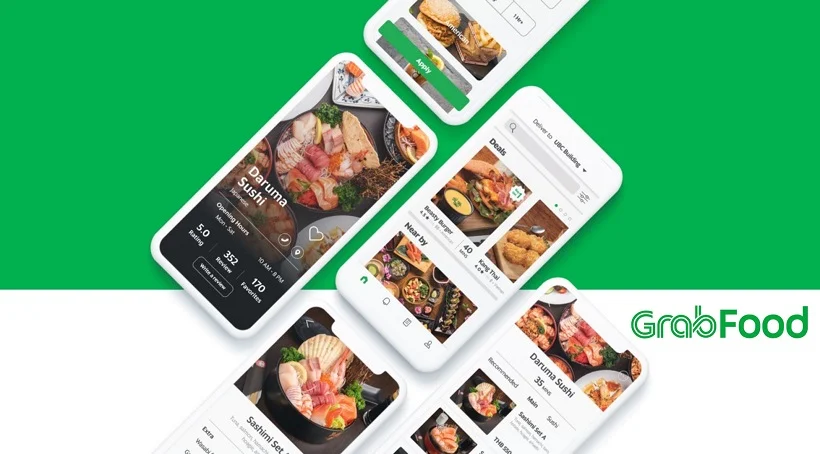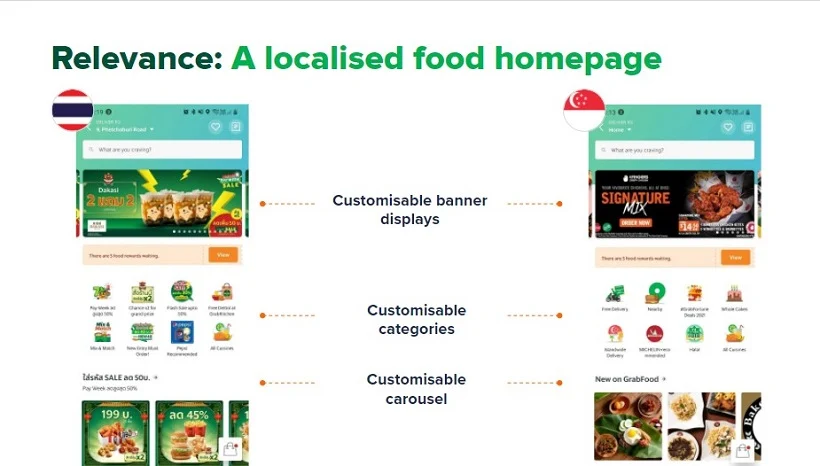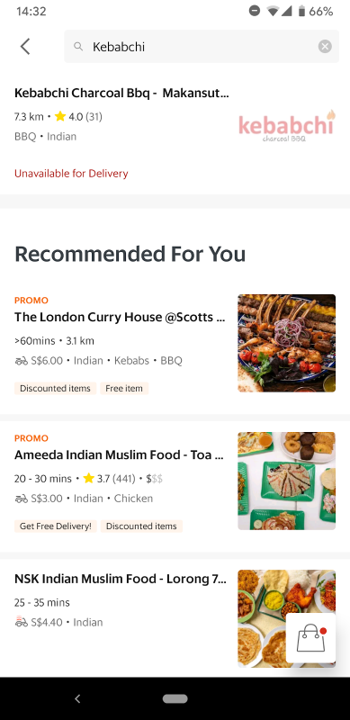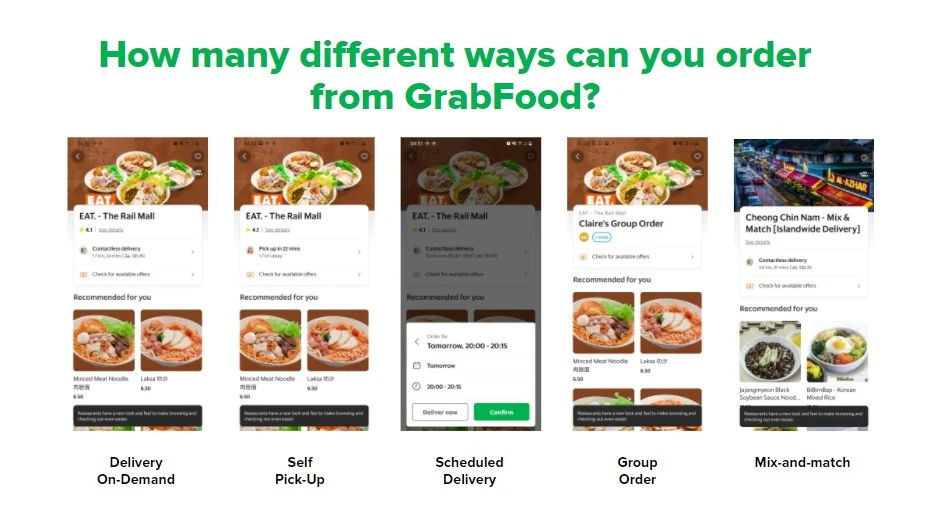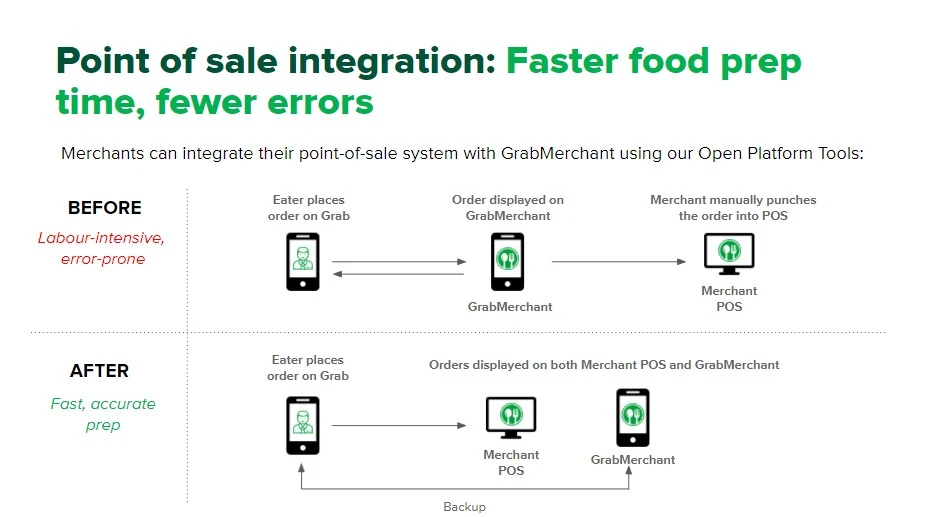Sustained demand for online food delivery service has led tech companies like Grab to venture in this growing segment. It is truly a mark of development and innovation in technology on the area of food delivery; and this, in combination with a number of factors like urbanization, digitalization, and the rising number of middle income earners, has brought about a great opportunity for businesses to harness the potential of online food delivery service. Moreover, the existing health and safety concerns during this pandemic have shifted consumers' preference towards an alternative way where they can order food from their favorite restaurants without having to leave the comforts of their homes.
GrabFood System Continuous Improvement
With more entrants to this segment, what separates one from other players in the market is how well one player delivers a delightful experience for its users - from the time they browse, order, to the time they wait for their food to arrive. Providing this level of experience to users is the aim of Grab in building its own food delivery technology, where it takes into account the following:
- To enable localization at scale;
- To delight eaters and drive sustainable demand for their merchant-partners; and
- To protect eater experiences in crunch time.
A localized food homepage
Relevant recommendations and alternative options
The GrabFood app is able to provide personalized recommendations based on what consumers enjoy. Recommendations are arranged based on their ranking logic which considers general and individual factors like the following:
- General factors such as merchant popularity, Estimated Time of Arrival (ETA), driver availability, etc.
- Individual factors such as past browsing and ordering history (e.g. cuisine, budget, food preferences).
Merchants that most closely match user profile are listed first. The ‘Recommended for You’ section in the GrabFood homepage is also personalized for users in real-time based on their search patterns. For example, users who are searching for a particular fast-food restaurant will see the section being updated to show other similar fast food options almost immediately.
Furthermore, if a dish or restaurant a user searched for is unavailable or has less than 4 options, the app finds similar merchants based on keyword similarities on the menu which is of course powered by the machine learning capabilities.
GrabFood Ordering System
For customers, they currently offer 5 types of ordering functions within the app - Delivery On-Demand, Self Pick-Up, Scheduled Delivery, Group Order, and Mix-and-Match.
Order Platform
To facilitate smooth order handling, GrabFood has developed an order platform that combines over 10 connected systems.
- The platform provides a 360 view of all incoming orders regardless of the order type (delivery on-demand, self pick-up, scheduled delivery, group ordering, mix-and match).
- It enables merchants to keep their restaurant information updated - e.g. whether an item is out of stock, or any changes to operating hours.
- There's also an integrated analytics tools in the GrabMerchant app so merchants can understand customers’ purchasing behaviors and create relevant campaigns for them.
- Lastly, the Open Platform tools improve operational efficiency and make the integration process as smooth as possible.
Point of Sale Integration
An example of Open Platform tool that GrabFood has developed for merchant-partners is the Point of Sale integration. This enables merchant-partners to link their own POS system with GrabMerchant. Prior to this integration capability, Merchant’s staff have to manually transfer GrabFood orders from the GrabMerchant app into their restaurant POS.
Now with the integration, GrabFood orders flow straight into the restaurant POS, and right into the kitchen. Whenever merchants update their menus in the restaurant POS system, it will be reflected in the GrabFood app immediately. This means that merchants only need to manage one system, and helps them save time and improve accuracy.
Self-Serve Integration
To encourage and enable more merchant-partners to integrate their POS systems with GrabMerchant, GrabFood has also developed a Self-Serve System which includes step by step guides, testing, and debugging tools to help merchants set up POS integration on their own. Should merchant-partners face technical issues, GrabFood tech team remains ready to support them.
On-time preparation and Driver Availability
Accurate food preparation time estimations are essential in the overall ETA calculation. On average, drivers spend 6-11 minutes waiting in restaurants for merchants to finish preparing their orders. Because preparation habits may differ across markets, Grab is testing out different features to encourage merchants to prepare food more promptly and to minimize waiting time for drivers at restaurants.
Optimizing fleet - Batching
With order batching, GrabFood system can assign two or more consumer orders with nearby drop-off or pick-up points for a driver to complete in a single trip. Order batching was developed to help optimize their fleet, especially during peak hours and supply crunch time, such as when there’s a heavy downpour at dinner time.
Optimizing fleet – Radius Reduction
In supply crunch times when there’s too many orders and too few delivery riders in an area, eaters may have to wait very long for a delivery-rider. Chances of merchants cancelling an order is also higher as they may be operating at maximum capacities.
When driver allocation rate and order completion rate decline severely, GrabFood system kicks in to start gradually reducing the delivery radius. This helps to concentrate delivery-riders within a smaller area, and to help improve order completion rates. This is applied until order completion rate stabilizes and more delivery-partners are available in the area.
"We are building an integrated food ecosystem that delivers the greatest choice and convenience to consumers and provides sustainable revenue opportunities for delivery and merchant partners,” Suthen Thomas, chief technology officer of deliveries at Grab, stressed the importance of building an integrated system.
All these developments are part of Grab's greater vision to be an everyday app where it provides an ecosystem of complementary services, creating a seamless experience and unlocking value for its customers. And with the success of the tech firm's GrabFood arm, it is undoubtedly heading to the direction that it wants to be.

